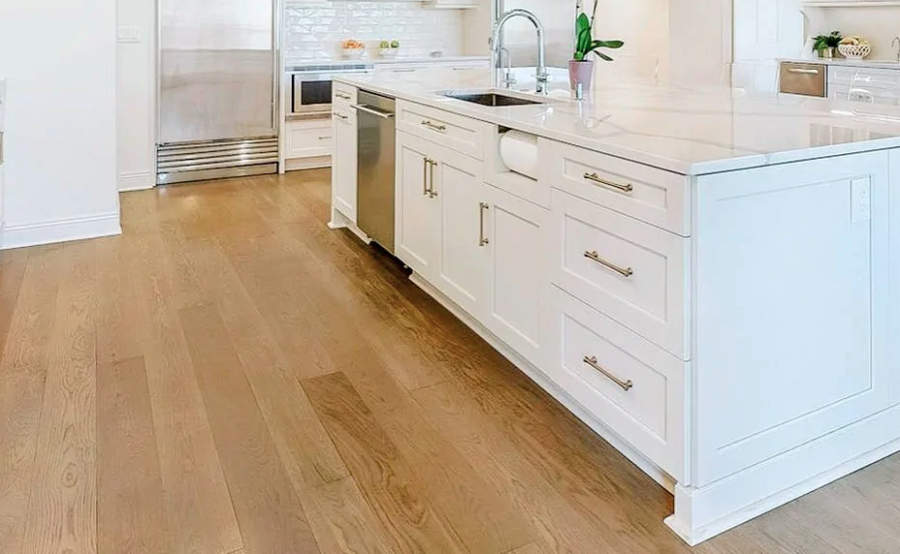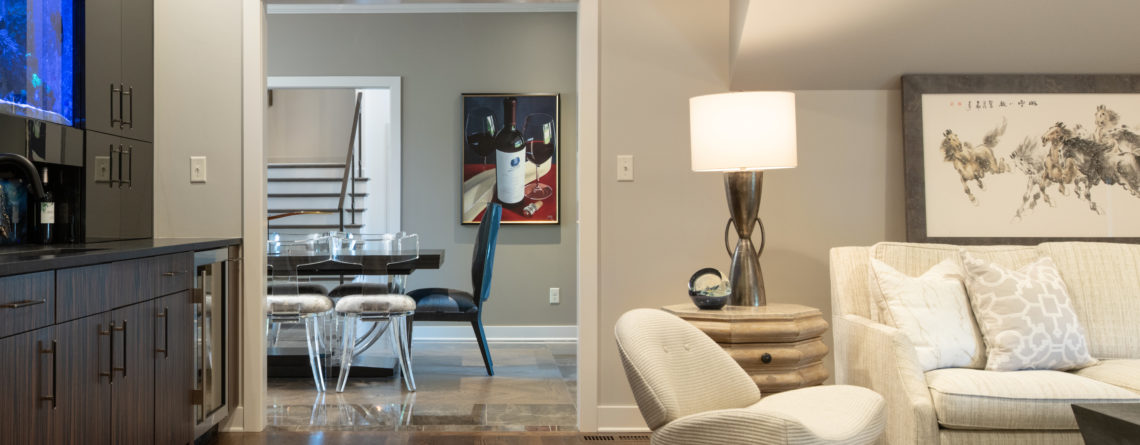Whether refinishing, remodeling or building new, you will be faced with the decision of what type of flooring you will use. Oak continues to be the top choice of homeowners and designers for its timeless beauty, durability and affordability. Yet, there are so many considerations when selecting your oak flooring, from species to cut to stain. Tran + Thomas will de-mystify this process for you.
Oak can be categorized into two types: red and white. While the names are pretty apt for their appearance, both woods are actually named for the color of their bark. Varieties of red oaks include, Black Oak, Laurel Oak, Pin Oak and Willow Oak. Red oaks harvested for their wood grow all across America, particularly in Eastern U.S. and Canada. Red oak is also grown in the United Kingdom, Europe and Iran. White oaks, however, grow exclusively in North America, from as far north as Canada through Appalachia and the south Atlantic states. White oak varieties include Bur Oak, Chestnut Oak and Post Oak.

Characteristics
Red Oak
- Pink or reddish undertones, sometimes light golden
- Color has highs and lows, from light to dark
- Can have a plumed or flared grain, with more variety in appearance
- Very durable, with a Janka hardness rating of 1290
- Resists splitting and wear
- Hides scratches more easily, due to the variance in its grain
- Sands more easily than white oak
- End grain has open cells, making the wood more porous

White Oak
- Creamy, tan coloring, with warm brown undertones
- More uniform color
- Grain is more open and straight with longer rays and less variation
- Slightly more durable than red oak, with a Janka hardness of 1360
- Resistant to rot and water, as its end grain has closed cells
- While harder than red oak, scratches can be more visible due to the grain
- Stains more easily and evenly

Saw Cuts
How the wood is sawn during production can drastically change the look of the finished product. The three most common types are plain sawn, quarter sawn and rift sawn.

Plain Sawn
- Most common and least expensive of the three
- Creates a wavy, cathedral pattern
- Not as dimensionally stable and can be affected by changes in humidity and moisture

Quarter Sawn
- More expensive than plain sawn
- Has a more linear grain with dramatic flecking
- Commonly used in Mission-style or Arts and Crafts furniture
- More stable and resists warping

Rift Sawn
- Most expensive and least common type
- Straight, tight grain with no flecking
- Most stable of the three
- Popular for fine furniture and cabinetry

Stain
Not surprisingly, red oak and white oak take stain differently. Though they are the same wood type, the color or lightness of the stain will vary due to their natural coloring and grain:

On the red oak, you can see the pinkish hues come through until the stain is darker and richer. The medium to darker stains enhances the natural color variance in the grain, creating a more dramatic look.

The stains on the white oak do not enhance the natural grain as much, but instead creates an even color, giving the wood a more contemporary look.
Before deciding on your stain, whether on red or on white oak, always sample! Take scraps of planks if you are installing new, or find an inconspicuous area on an existing floor to try different stains. And you can always mix stains to get the perfect look you want.
Whichever type, cut or finish you choose, oak floors are elegant and timeless, and will always be in style.

About Tran + Thomas
Built on the foundation of a 30-year, family-owned Interior Design business, Jill Tran and Carmen Thomas opened Tran + Thomas Design Studio in 2011 bringing a combined 36 years of experience to their projects. They work on both residential and commercial projects across several styles. Interested in their services? Call (913) 268-9595 or schedule a consultation below.
